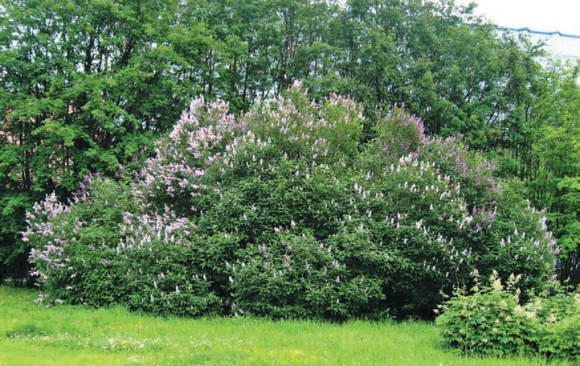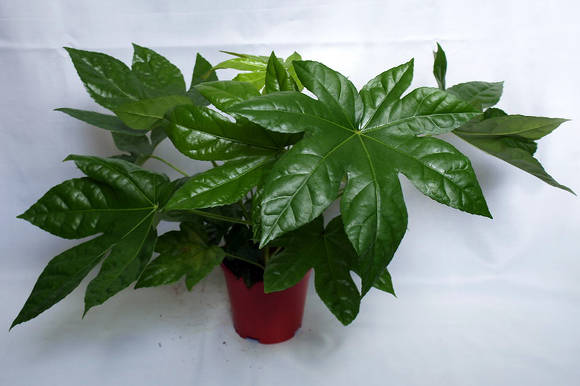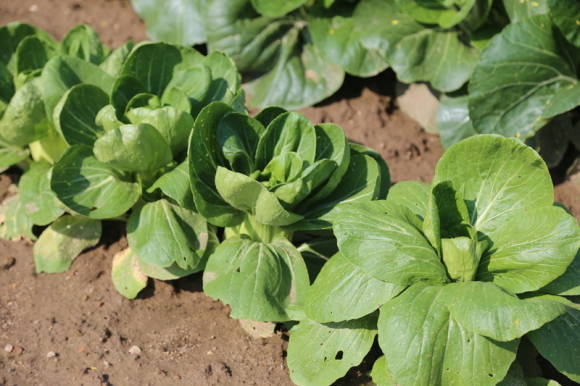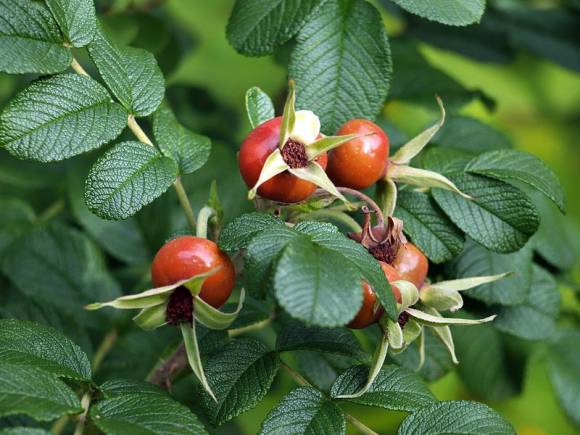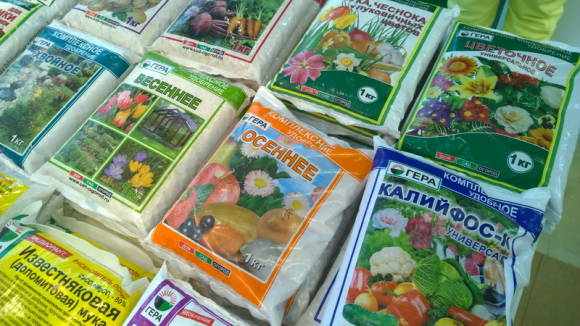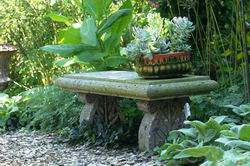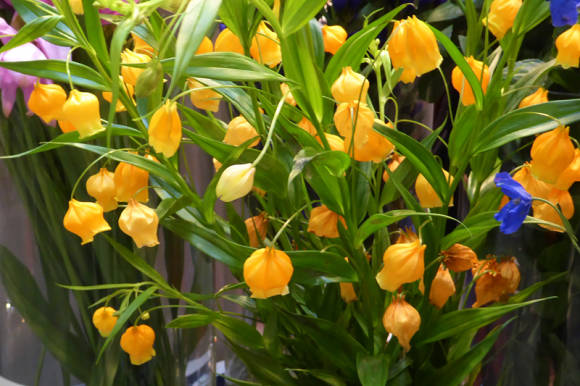The flowering dates of Schlumberger fall in winter, usually in January, which is why it is often called the Christmas cactus. Schlumberger is a genus of epiphytic cacti that live in the humid forests of Brazil. They settle in crevices of trunks or on rocks, their roots grow into small clusters of rotted foliage. Cactaceae belonging to the extensive family (Cactaceae), outwardly they differ significantly from desert relatives - they have flat, segmented, bare stems with a scalloped edge, which took over the function of photosynthesis, the spines are practically reduced and remained in the form of small bristles on the sides of the stems located in special buds - areoles. Flowers are formed at the ends of the shoots. The outer petals are shorter and curved back, the inner ones are longer and form a tube. In some species, the difference between the outer and inner petals creates a flower-within-a-flower effect. In some varieties, flowers can be up to 8 cm long and 6 cm in diameter.
 |
More information about the Schlumberger species diversity can be found on the page Schlumberger.
Through hybridization of different species and selection of mutations, many modern Schlumberger varieties have been created, their annual cultivation in Holland for the Christmas holidays exceeds 2 million copies. Some varieties are quite rare and of interest only to collectors, and most modern flowering varieties are divided into two large groups:
- Trunkat's group - varieties that have retained the main features of the Schlumberger truncated (Schlumbergera truncata). Segments with a strongly serrated edge, zygomorphic flower (oblique, with one axis of symmetry), located just above the horizontal, pollen is yellow. Their stems are directed upwards and the flowers do not droop, like in another group of varieties. These varieties are valued for their bright and abundant flowering, the color of their flowers is very diverse: yellow, orange, white, different shades of pink and purple. It is they who are preferred in modern industrial cultivation.
 |
- Buckley group- varieties that inherited the features of one of their ancestors - Russell's Schlumberger (Schlumbergera russelliana), with scalloped segments along the edges, almost radially symmetrical flowers, which are located below the horizontal, with pink pollen. As a rule, these varieties bloom a little later than the previous group, and they are usually called the Christmas cactus. Schlumberger Buckley (Schlumbergera x buckleyi) was obtained in 1840 in London by W. Buckley by crossing two species, Schlumberger Russell and Truncated (S. russelliana × S. truncatа)... This is an extremely unpretentious plant, some specimens can live up to 100 years, reach impressive sizes in diameter and simultaneously have up to 1000 open flowers. This hybrid is capable of blooming several times a year, we call it the Decembrist, and it was he who could be found in almost any house in the recent past, when the choice of indoor flowers was much more modest.
About other groups of modern varieties - on the page Schlumberger.
Not only the appearance, but also the living conditions, and, consequently, the care of these plants differs sharply from the care of representatives of desert cacti.
Lighting Schlumbergers prefer bright, diffused, they should be protected from the direct summer sun. In winter, it will be useful for them to spend about 2 hours in the sun. Varieties of the Buckley group are more tolerant to excessive light, while varieties of the Trunkat group may develop a red pigment on the segments of the stems from excess light. At the same time, the lack of light will prevent the plants from blooming. The length of daylight plays an important role in the formation of flower buds; its decrease in autumn stimulates flowering.
Temperature also plays a very important role in the formation of flower buds.Schlumberger does not tolerate heat well, the optimal summer temperature is + 18 + 24 ° C. In autumn, it is necessary to lower the temperature to + 10 + 15 ° C so that the formation of flower buds begins. Cactus can withstand lower positive temperatures, but they inhibit bud formation.
Watering regular and moderate all year round. Although Schlumbergers belong to cacti and can store water in the stems in case of drought, it must be remembered that these are forest dwellers growing in humid forests and cannot remain without watering for a long time. Prolonged overdrying will damage the roots, regular waterlogging will cause rotting of the roots and stems. Water after the top layer of the soil has dried; excess water from the pallet must be drained after 15 minutes.
Air humidity. As a forest cactus, an inhabitant of tropical rainforests, Schlumberger prefers humid air. It is useful to spray the plant in a dry room at temperatures above + 18 ° C.
Priming for Schlumberger should be light and well-drained, with a lot of loosening components, small pieces of bark or perlite. You can use ready-made peat, slightly acidic soil for succulents. It is recommended to grow plants in relatively small pots.
Transfer. Young plants are transplanted by the transshipment method once a year in spring, adult specimens - once every 3-5 years.
Top dressing apply a universal complex fertilizer for potted plants (NPK 10-10-10) in a half dose from March to September. From September until the beginning of flowering, it is necessary to feed with fertilizers with a high potassium content. After the end of flowering, stop feeding for a month or two, at which time a short rest period begins before the start of vegetative growth.
 |
Conditions for flowering... The budding of flower buds is influenced by the length of daylight hours and the temperature of the content. To start flowering for Christmas, if the plant is indoors without artificial light that can extend daylight hours, no additional measures are required. The short daylight itself stimulates the budding of flower buds. It is necessary that with the arrival of autumn, for 6-7 weeks, daylight hours do not exceed 9-10 hours.
But regardless of the length of daylight hours, the formation of flower buds will occur at the optimum temperature (+ 10 + 15 ° C) during the same 6-7 weeks. After this period, you can transfer the plant to a warm room with a temperature not higher than + 22 + 24 ° C.
It is easy to provide conditions for flowering if you keep the plant on the balcony in the summer, and do not rush to bring it home in the fall before the onset of low positive night temperatures.
One of the most common problems in the cultivation of Schlumbergera is the dropping of buds. The reason may be too low or high temperature, overmoistening or overdrying of the substrate, sudden changes in conditions of detention. After the beginning of the formation of buds, it is better not to change the place or turn the plant, it must be protected from air currents and heat sources.
During and immediately after flowering, slight wrinkling of the shoots may be observed, which soon disappears.
Reproduction carry out in short pieces of stems, 1-3 segments. It is better to carefully break off the cuttings from the stem and let them dry in the air for 2-7 days. Then powder the lower end with Kornevin and plant in a slightly damp substrate, a mixture of peat and perlite in equal proportions. The optimum rooting temperature is within + 20 + 25 ° C. It is not necessary to place the cuttings in the greenhouse, but it is advisable to spray often. Long daylight hours will have a positive effect on rooting.
Pests and diseases. Schlumberger is quite resistant to pests and diseases. If the watering regime is not followed, rot may occur. Of the pests, it can be affected by the scale insect and mealybug, which often hides below ground level.
About pest control - in the article Houseplant pests and control measures.
Photo by Rita Brilliantova and from the GreenInfo.ru forum

